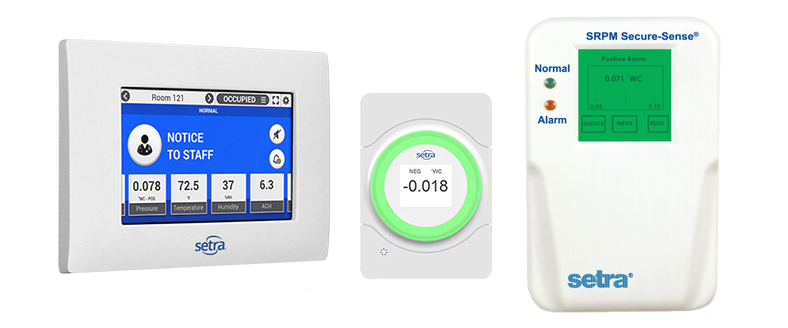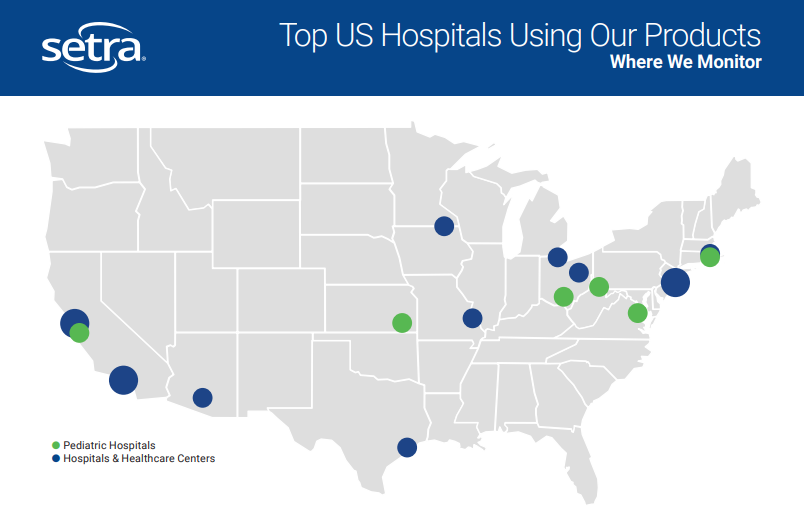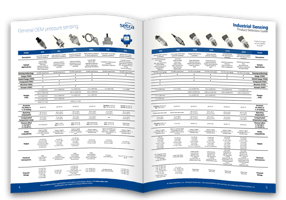Setra Lite™ has long been a trusted visual pressure indicator, providing clear and immediate pressure status readings for critical environments. Now, with key new upgrades, Setra Lite™ offers even greater convenience, adaptability, and visibility to meet the needs of facility managers, maintenance personnel, and staff.
Setra Blog
Discover the complex and ever changing history of room pressure monitoring, a testament to healthcare's commitment to safety. From ancient methods using smoke and feathers to today's sophisticated digital systems, explore how innovation has elevated infection control.
September 18, 2023
From Manual Checks to Money-Saving: How Setra LITE Reshaped Room Pressure Management in Southern California
This case study will explain how a prominent hospital in Southern California successfully improved compliance adherence, patient safety, and hospital efficiency while also seeing significant cost savings by automating room pressure monitoring in critical areas.
July 18, 2023
Maximizing Cost Savings and Increasing Labor Productivity with Setra Lite Room Pressure Monitor
In the fast-paced healthcare environment, optimizing efficiency and reducing costs are paramount objectives for hospitals. The Setra Lite Room Pressure Monitor offers a cutting-edge solution that streamlines monitoring processes, frees up valuable time, and ensures continuous compliance. We delve into the benefits of Setra Lite, highlighting its time-saving features, simplified setup, significant cost savings, and the ability to maintain continuous monitoring.
The OS (operating space) is one of the highest-risk, highest-consequence spaces in a health care facility. Ensuring a sterile and safe environment is crucial to prevent infections and protect both patients and staff. Without proper monitoring and control, the OS can become a breeding ground for airborne pathogens, leading to severe consequences. Setra’s innovative solutions address this problem and help healthcare facilities adhere to standards, such as the ASHRAE170 code, to avoid fines, fees, and potential shutdowns.
Protected environments are designed to ensure at-risk patients with diseases such as cancer or HIV are kept safe from airborne pathogens. This requires constant pressure monitoring of the space to ensure positive pressure is maintained, preventing infectious agents from entering the space. Monitoring temperature and relative humidity is critical in minimizing bacterial growth and ensuring patient and staff comfort and safety.
It is commonly assumed that organizations need to choose between NIST and ISO. Neither is better than the other and can both be used simultaneously.
Maintaining and monitoring room pressurization in hospitals is essential for meeting regulatory standards and ensuring the safety of a space. Incorrect room pressurization jeopardizes the health of both patients and staff.
We recently interviewed one of our sales managers about the Setra Lite. He answered some of the most common questions around this innovate product.
October 29, 2019
Does Your Room Pressure Indicator Still Require a Ping-Pong Ball? Maybe It's Time to Upgrade
Hospitals and other critical environments contain several spaces that require pressurization. Highly critical spaces require full environmental room monitoring. However, a number of other spaces still require pressurization but do not require a room monitor. According to ASHRAE Standard-170, spaces like this include:
Subscribe to Our Blog!
Topics
- Critical Environments (182)
- HVAC/R (179)
- General Industrial (153)
- Building Automation (134)
- General Industrial OEM (92)
- Energy Management (85)
- Test and Measurement (66)
- HVAC/R OEM (58)
- Barometric (44)
- Alternative Fuels (42)
- Medical (40)
- Process/Mfg Tank Level (40)
- Water and Wastewater (39)
- OHV (38)
- Oil and Gas (35)
- Industrial Vacuum (29)
- Calibration (25)
- Semiconductor (25)
- Particle Counting (18)
- Cleanroom Monitoring (17)
- Room Pressure Monitoring (16)
- Trade Show (12)
- cleanroom environment (12)
- Scales (11)
- Environmental Monitoring (10)
- Power Monitoring (10)
- Healthcare (9)
- Power Meters (9)
- Software (9)
- cleanroom monitoring systems (9)
- Case Study (8)
- critical environment technologies (8)
- Humidity (7)
- data centers (7)
- particle counter (6)
- pressure transducers (6)
- LITE room pressure monitor (5)
- hardware and software cleanroom monitoring systems (5)
- setra lite (5)
- Compliance (3)
- Video (3)
- hospital spaces (3)
- FAQ & Troubleshooting (2)
- Monitoring Compounding Pharmacies (2)
- Semiconductor Manufacturing (2)
- agencies that monitor pharmacies (2)
- energy (2)
- hvac (2)
- laboratories (2)
- monitor compound pharmacy (2)
- protected environment (2)
- regulatory compliance (2)
- setra lite features (2)
- usp 797 (2)
- Current Sensors and Transducers (1)
- Current Transformers (1)
- Pressure (1)
- aerospace cleanrooms (1)
- cems (1)
- digital transformation (1)
- ipv6 multicast (1)
- ipv6 multicast address (1)
- ipv6 multicast address range (1)
- isolation room pressure monitoring (1)
- multicast address ipv6 (1)
- multicast ipv6 (1)
- operating room (1)
- pharma 4.0 (1)
- pressure sensor (1)
- pressure transducer companies (1)
- semi conductor (1)
- sensors and transducers (1)
- setra pressure transducers (1)
- submetering (1)
- sustainability (1)
- temperature monitor (1)
- temperature monitoring for pharmacies (1)
- transducers (1)
- usp 800 (1)
- water (1)
- what does hvac stand for (1)
- what is a transducer (1)
- what is hvac (1)










